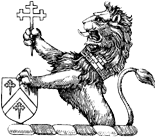
In the Footsteps of the Snowshoe Priest
THE SLOVENIAN BISHOP’S SOCK
The 1,700-mile route circling Lake Superior, the largest of the Great Lakes, is one of the most majestic scenic drives of North America. Spectacular shorelines, forests, and rural vastness combine in splendor. My wife and I were unprepared to find on the lake’s shores a 60-foot-tall statue of a Catholic bishop wearing snowshoes. A nearby town, county, and park all bear his name. Since 1930 an annual festival has been held to honor him. A museum dedicated to him opened in 2018. A batch of admirers attended the 10th National Eucharistic Congress in Indianapolis this past July to publicize his cause.
All this for a bishop who died in 1868. It is said that famous persons are forgotten within 30 years of their death, and that your own family won’t remember you 60 years after you die. So, more than 150 years after his death, why is this bishop still being celebrated? And why is his sock on display in a museum?
Frederic Baraga was born in 1797 to a devoutly Catholic aristocratic family in Slovenia, then part of the Austro-Hungarian Empire, and today independent. His home was the castle of Mala Vas, which had witnessed the Ottoman Muslim ravages of the Balkans in the 15th and 16th centuries. By the time Frederic was 15 his mother and father had both died. A large inheritance fell to him, including the castle. At age 19 Frederic went off to a university in Vienna, the center of the empire. There Redemptorist priest Fr. Clement Hofbauer (d. 1820), now one of Vienna’s two patron saints, befriended him. Wealthy, well educated, and handsome, Frederic soon became engaged to marry.
At age 22 Frederic turned his back on his regal status for a lifelong journey to the peripheries. He broke off his engagement, surrendered all his wealth to his sister Amelia, and took steps to become a priest for the Archdiocese of Vienna. He then changed direction again, leaving Vienna’s opulence for Ljubljana, the capital of Slovenia. There, at age 26, he became a diocesan priest.
Assigned to St. Martin’s Parish, Fr. Baraga mortified himself by eating only bread and water and sleeping on the floor. “Whatever you give to the poor,” he preached, “that you shall have; what you do not give, that someone else will have.” To a barefoot beggar he once gave his shoes. To a sickly beggar he gave a home in his rectory. He preached to win souls, and he wrote Dushna Pasha, a Slovenian prayer book that is still in print two centuries later. His portrait was commonly seen in parish homes 50 years after he left St. Martin’s.
You May Also Enjoy
Hawthorne, Thoreau, Melville, and Dickinson together comprise a reliable foundation for realist biases that are fully in line with the Platonic-Augustinian tradition.
The dominant liberal-progressive historians of the past 100 years have "photoshopped" the Haymarket event into their picture of America as an intolerant plutocracy.
Immigrants now make up about 20 percent of our seminarians and a majority of our Catholic youth.

